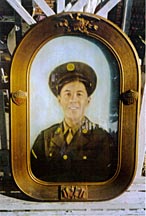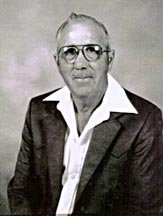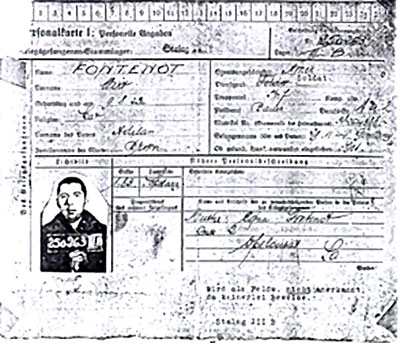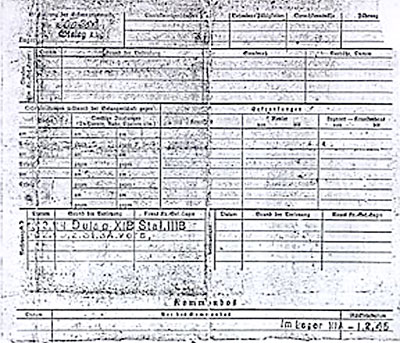
Established April 14, 1942
 |
American Ex-Prisoners of War
A not-for-profit, Congressionally-chartered veterans’ service organization advocating for former prisoners of war and their families.
Established April 14, 1942 |


Sgt. Wirt Fontenot
|

Wirt at 72 years of age
|
|
| Last Name | First Name, Middle Init. | Nickname |
| Spouse | City | State, Zip |
| Conflict — Theatre | Branch of Service | Unit: |
| Military Job | Date Captured | Where Captured |
| Age at Capture | Time Interned | Camps |
| Date Liberated | Medals Received | |
| After the War ... | ||
Born in Prairie Ronde, Louisiana on August 9, 1922, Wirt was raised during the depression, the son of a farmer. He joined the CCC (Civilian Conservation Corp) in 1940 at the age of 18 years. He was discharged from this Corp in 1942 and inducted into the army the same year on December 1, 1942.
Camp Howz, Texas was the site of his basic training and Camp Claiborne, Louisiana, was where he went through further training and Army maneuvers. In 1944 he was sent to Camp Kilmer, New Jersey where he boarded an English ship, the H.M.S. Sterling Castle, which was bound for England. When this ship left the New York harbor, it was hit by a tanker and had to return to the pier. All GIs were taken back to Camp Kilmer.
Once the ship was repaired, they began their journey anew across the sea, landing in Liverpool, England October 10, 1944. When Wirt left England for France, he became part of the personnel that left the 84th and joined the "Red Ball Express," a unit that delivered supplies to the front line. He was a truck driver, and because he could speak and understand French, he became an interpreter for an officer.
After rejoining his outfit in November, he moved through France, Belgium and Holland, taking part in the "Battle of the Bulge." He was in mud and snow, and his fingers often stuck to the barrel of his gun. In a foxhole in the Ruhr Valley, he was captured by German soldiers. He was taken to a huge building where his picture was taken. He was so cold that he wouldn't have cared if they had shot him, which is what he thought they were going to do.
He was marched to a prison camp at Nienburg, Germany, then transferred by boxcar to Stalag III-B at Furstenburg, Germany. There were 64 men in small boxcar-deplorable conditions and below-freezing weather. Later, he was marched to Stalag III-A at Lukenwalde, Germany. He went through Berlin in one of the moves. While marching, he saw an SS Trooper shoot an American soldier when he stopped to tie his shoe.
The Russians liberated him in April 1945. A huge Russian tank came right through the wall of the camp and the tank was being driven by a Russian woman. He and two other POW's found 2 horses and a buggy. Wirt knew how to hitch the horses to the buggy. They started traveling west and after 3 days, found the American lines.
After he was cleaned up, deloused, issued clean clothes, given a physical and food, he was flown in a C-47 to La Harve, France. He boarded ship there on May 22 to return to the United States and arrived on June 3. After spending a convalescense furlough at home and in Florida, he was sent to Camp Lee, Virginia, and then to Camp Kilmer, New Jersey. He thought he'd have to go to Japan, but the atomic bomb was dropped, and the war with Japan was over. He was discharged from Fort Dix, New Jersey on November 20, 1945.
Wirt worked for an oil company in south Louisiana for many years as a construction superintendent. He lived in Bristol, Louisiana with his wife, Mellie Sibille Fontenot, three children, eight grandchildren and three great grandchildren. In his spare time, he raised quarter horses. Wirt died on March 1, 2003.

The front of Wirt''s POW card
|

The back of Wirt''s POW card
|